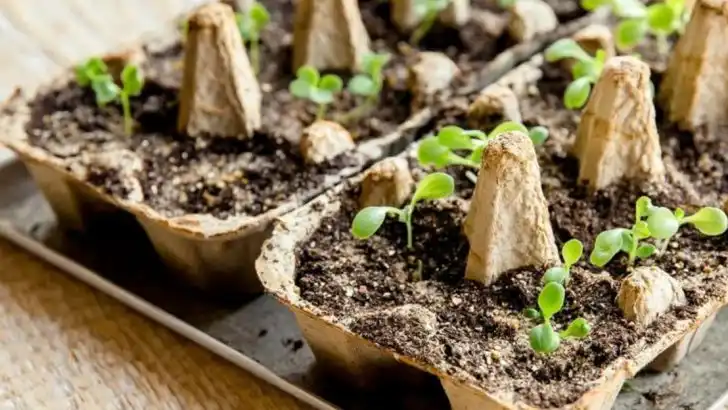You don’t need fancy pots or pricey containers to start your own indoor herb garden. In fact, you probably already have everything you need to grow lush, flavorful herbs—without spending a dime on a planter. These 17 creative ideas prove that growing herbs indoors can be easy, affordable, and surprisingly stylish.
From reusing mason jars, yogurt cups, tin cans, and even old mugs, this guide shows you how to turn everyday household items into charming, functional herb containers. Whether you live in a tiny apartment or just want fresh basil by your kitchen sink, these options offer flexibility, sustainability, and a whole lot of character. And the best part? Many of these “planters” require zero DIY skills.
Herbs like parsley, chives, mint, and thyme will thrive in these alternative homes as long as they get light and occasional water. So skip the trip to the garden store—your next perfect herb pot might already be sitting on your shelf. Ready to see which repurposed items made the cut?
Mason Jars
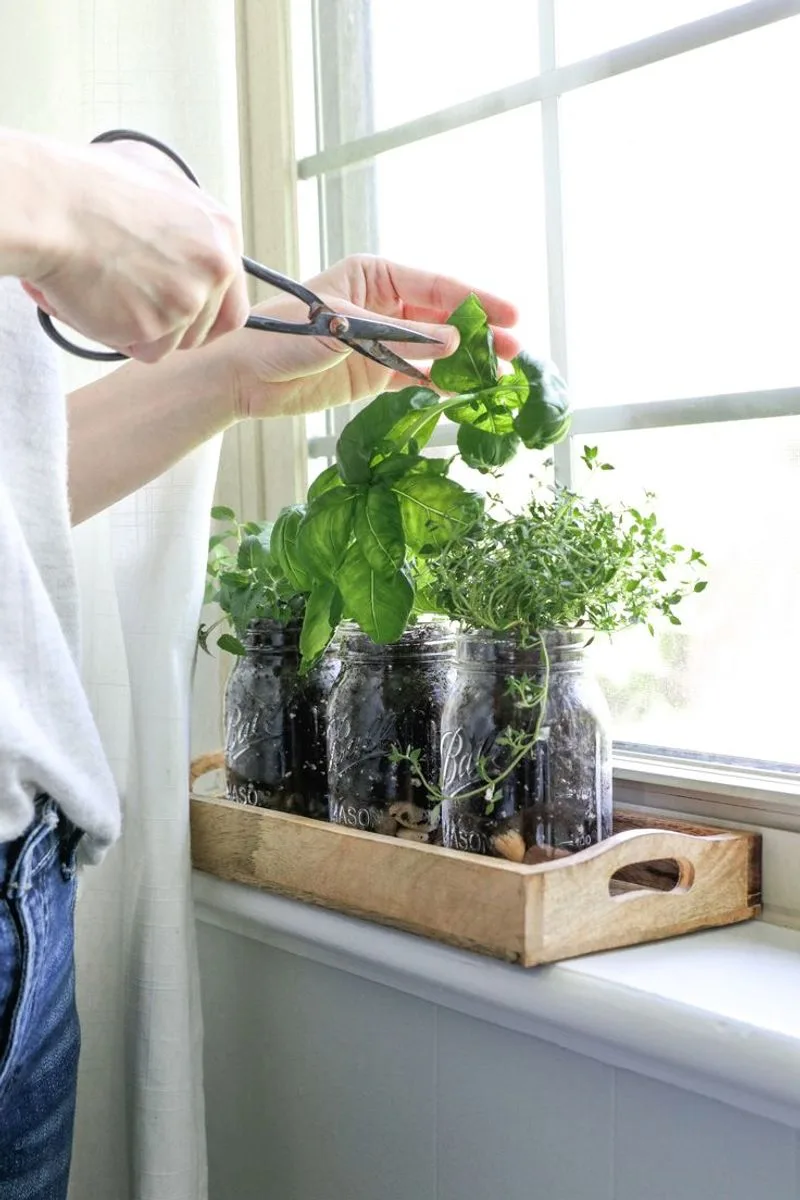
Mason jars aren’t just for canning; they can also serve as excellent herb containers. Their glass bodies allow you to monitor root growth, ensuring your herbs are thriving. Simply add some pebbles for drainage, soil, and your choice of herb seeds. Place them on a sunny windowsill and enjoy fresh herbs at your fingertips.
Tin Cans
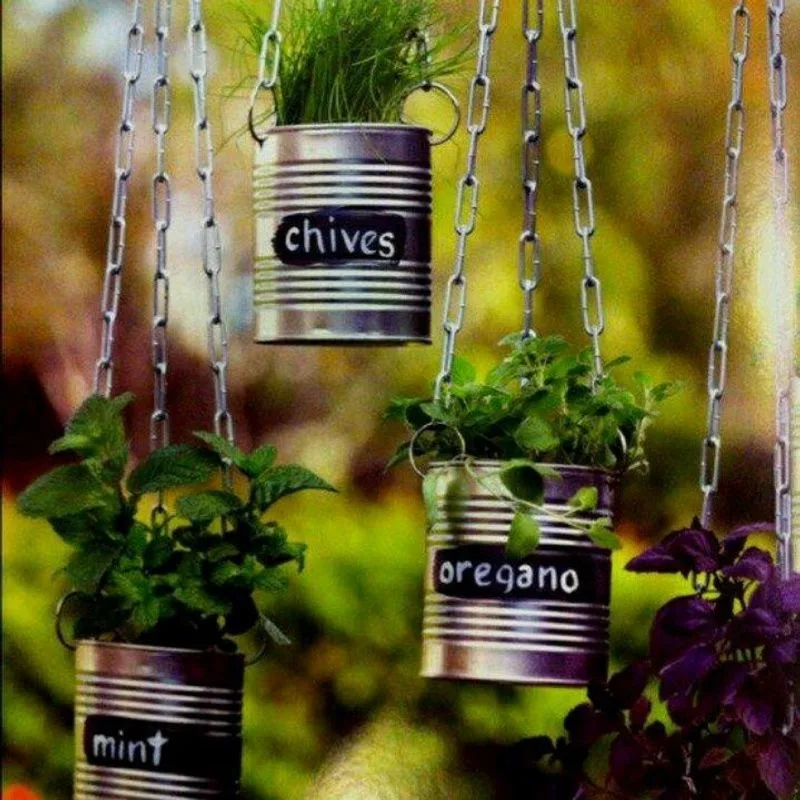
Don’t discard those tin cans just yet! With a quick wash and a few drainage holes, they become perfect homes for your herbs. Decorate them with paper or paint for a personal touch. These cans fit snugly on kitchen shelves or window sills, providing easy access to fresh flavors.
Teacups
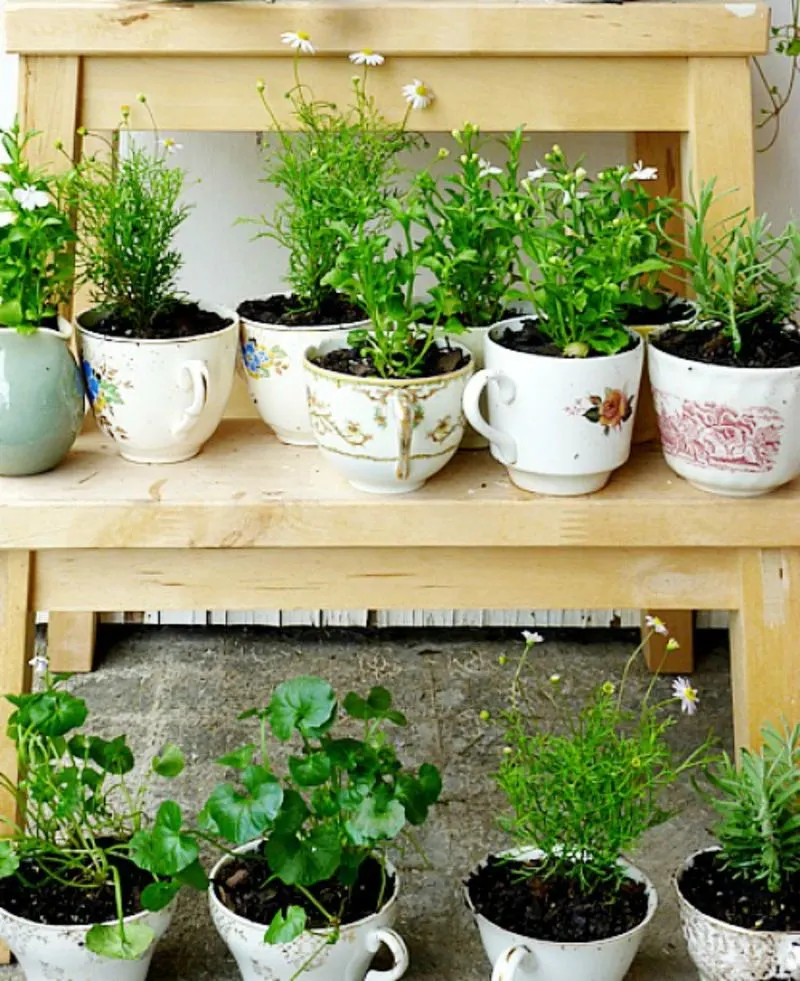
Transform old teacups into charming herb planters. Their compact size is ideal for small herbs like parsley or chives. Add some stones for drainage and watch your mini garden bloom. Arrange them on a dining table for a quaint addition to your home decor.
Eggshells
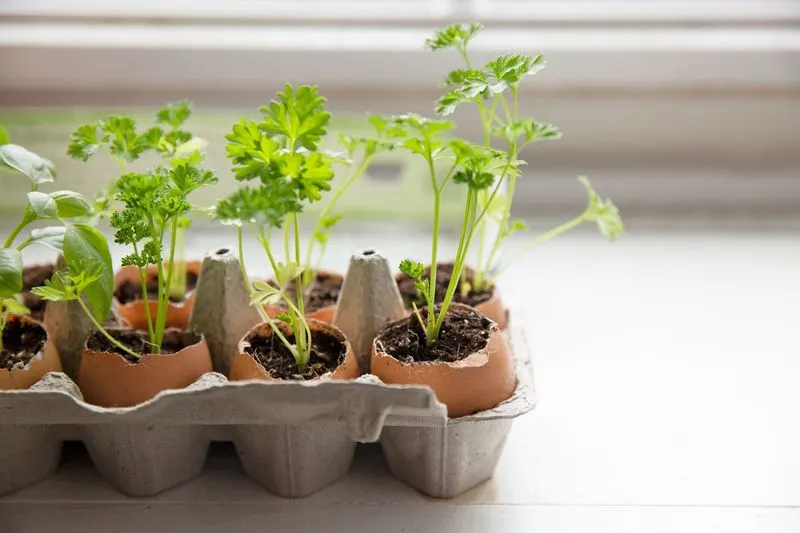
Eggshells are not just for compost; they make whimsical mini-planters for seedlings. Fill them with soil and seeds, then place them back in the carton. Once the herbs outgrow their shells, transplant them into larger containers or straight into your garden.
Old Boots
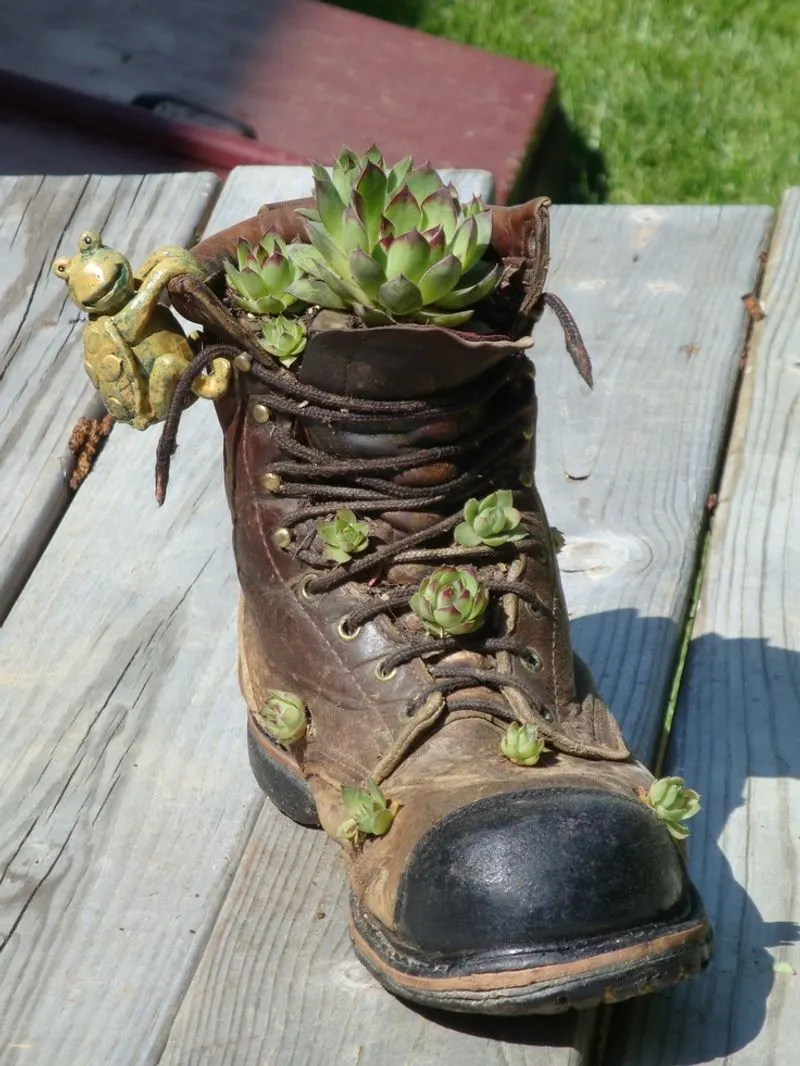
Repurpose old boots into whimsical planters that add character to any room. Fill them with soil and plant your favorite herbs. The boots’ height can accommodate deep-rooted plants, making them a unique and functional addition to your indoor garden.
Glass Bottles

Glass bottles offer a stylish way to grow herbs indoors. Choose clear bottles to observe root development, or colored ones for a decorative touch. Cut the bottles in half or use them whole, adding pebbles and soil to create a chic plant display.
Hollowed Books
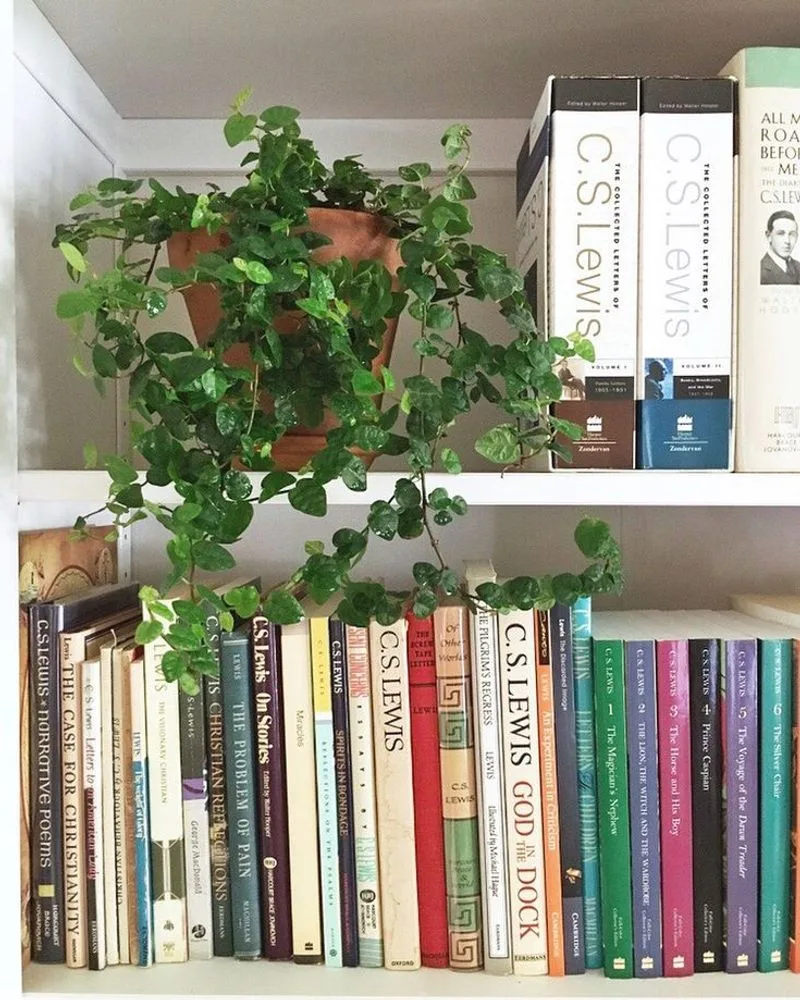
Old, hollowed-out books make for a literary twist on herb planting. This idea suits small, low-maintenance herbs like thyme or oregano. Line the inside with plastic, add soil, and plant your seeds. These book planters double as unique decorative items.
Coffee Mugs
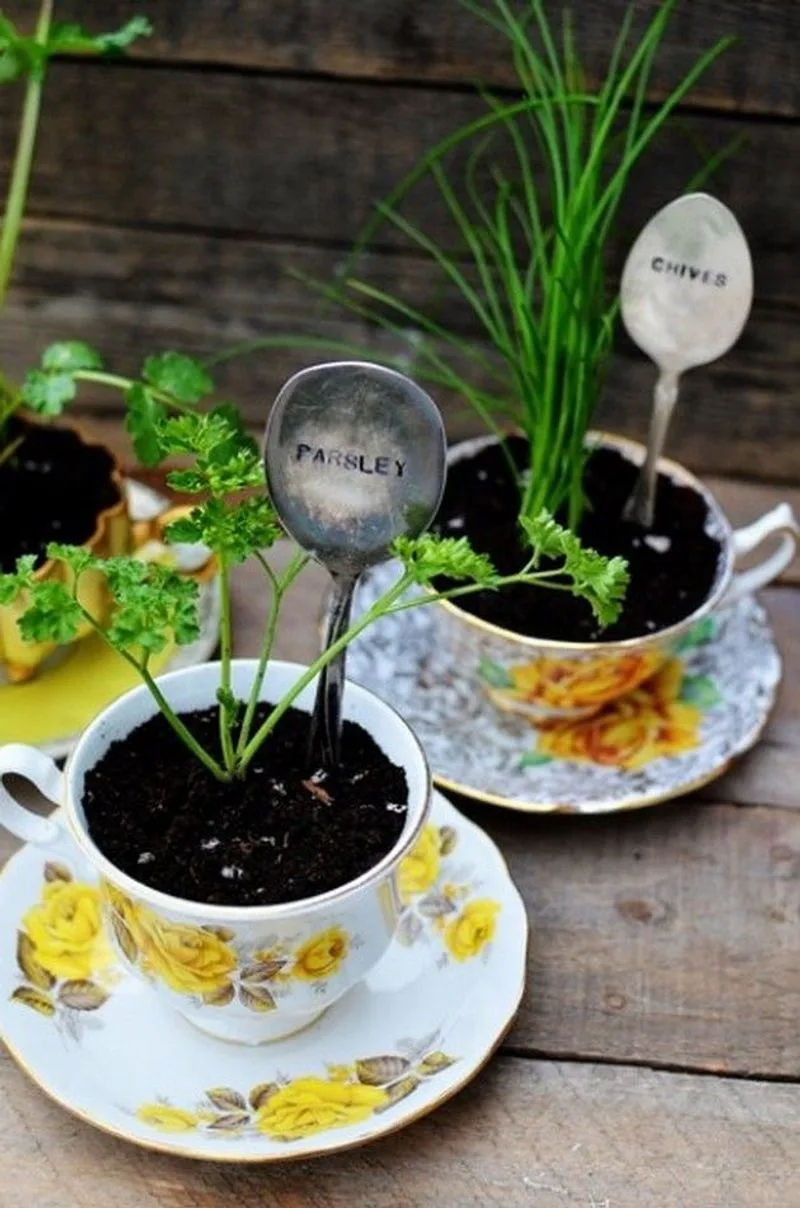
Coffee mugs aren’t just for sipping your morning brew; they can also cradle your herbs. With their sturdy build and fun designs, they add personality to your indoor garden. Just ensure proper drainage by layering the bottom with pebbles before adding soil.
Shells
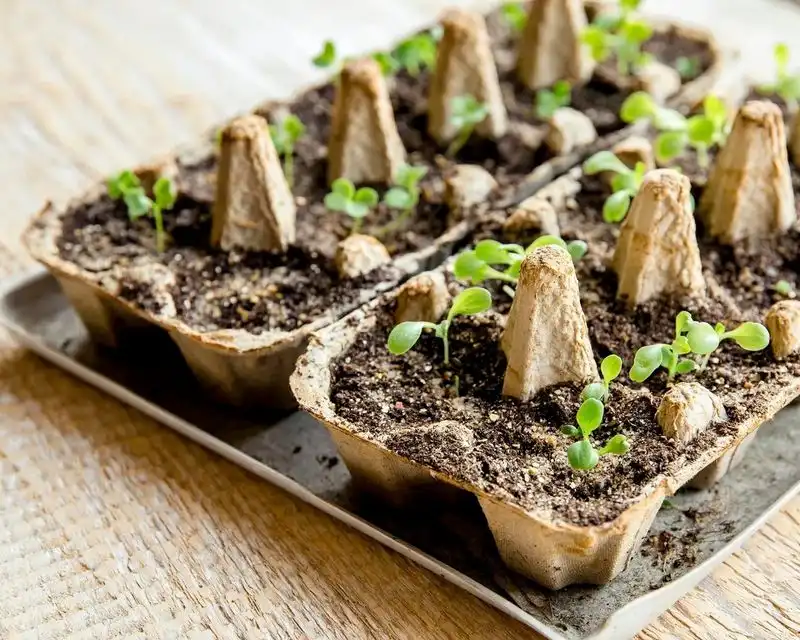
Bring a coastal vibe to your indoor garden by using large seashells as planters. Their natural shape and texture create a unique aesthetic. Ideal for small herbs, they can be grouped together to form a charming seaside display on shelves or tabletops.
Wine Corks
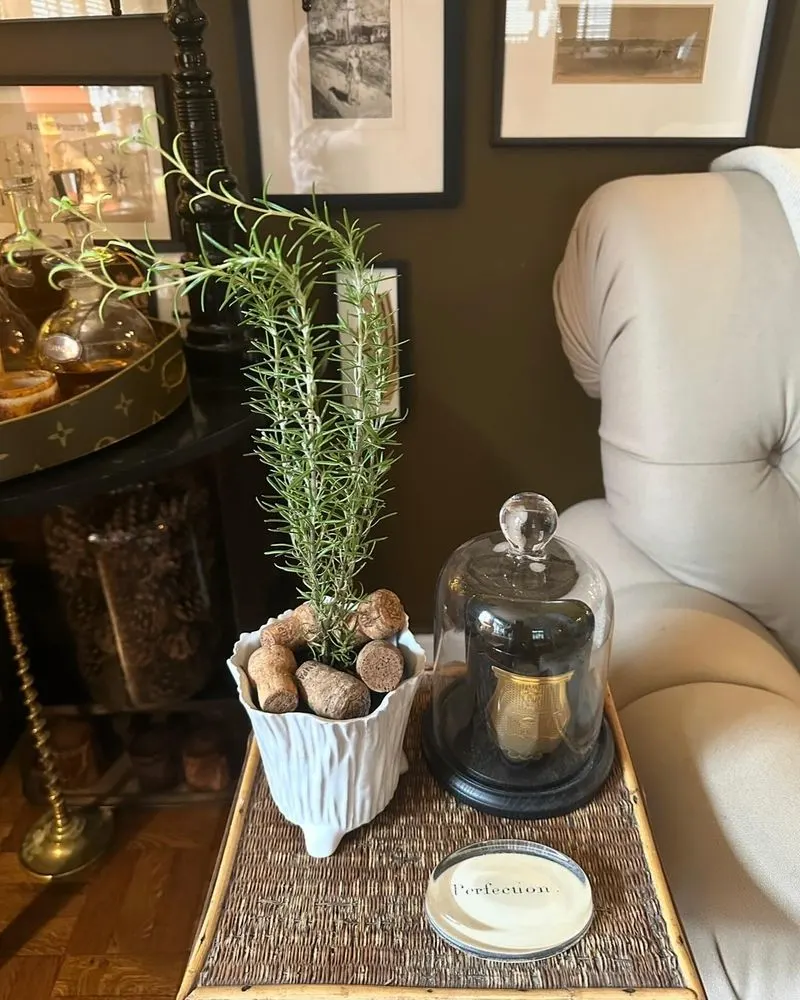
Wine corks, small and sustainable, can be turned into tiny planters for cuttings. Carve out a hole, fill it with soil, and insert a small herb cutting. Attach a magnet to display them on your fridge, adding a touch of greenery to your kitchen’s decor.
Colanders
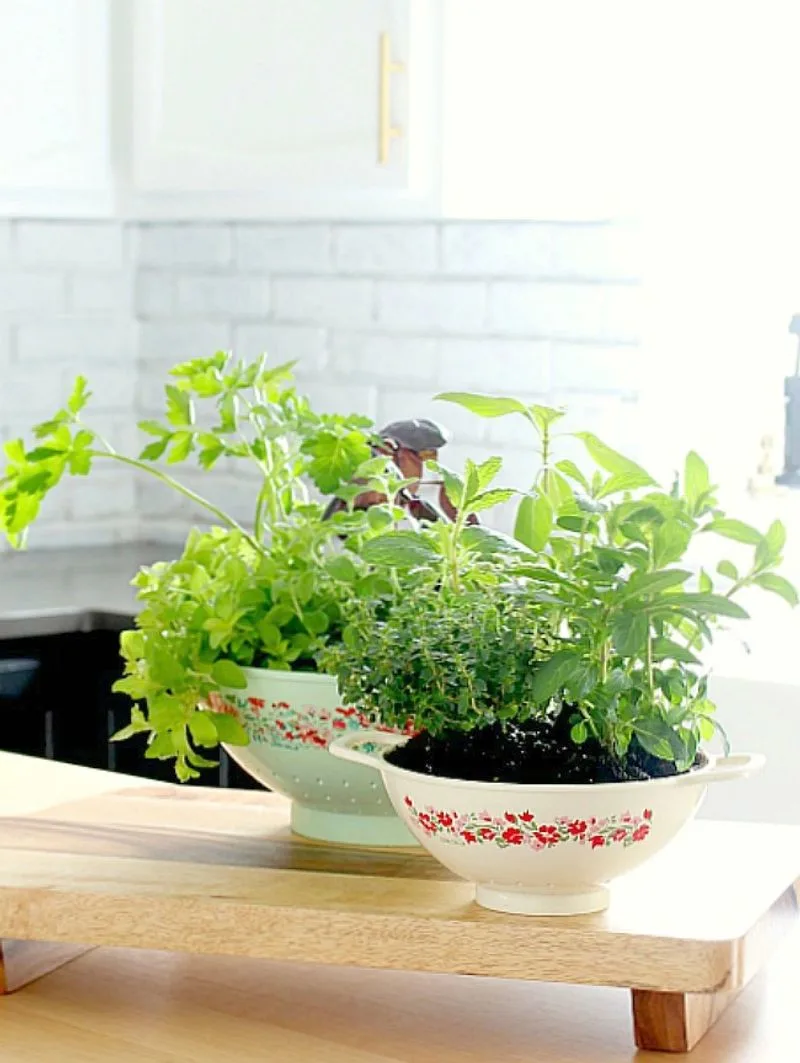
Colanders, with their built-in drainage, are perfect for growing herbs. Hang them in the kitchen to add a vintage touch while keeping fresh herbs within reach. Their size is ideal for larger herbs, allowing roots to spread comfortably.
Coconut Shells
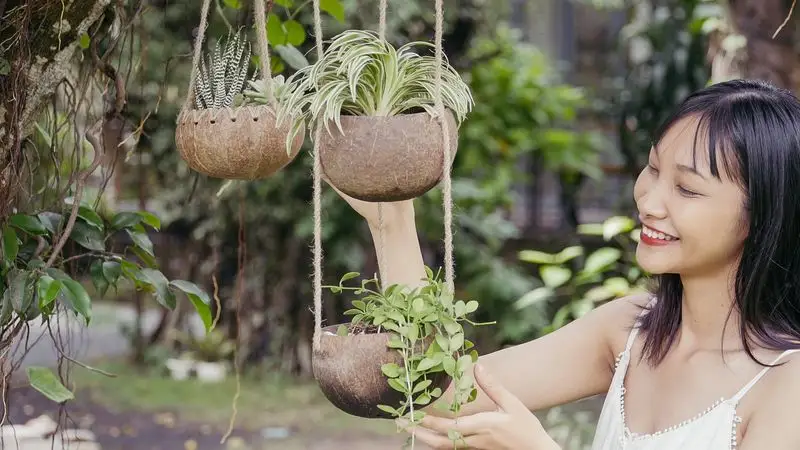
Coconut shells can be transformed into eco-friendly planters. Their natural, rustic look complements any decor style. Fill them with soil and seeds, and place them in a sunny spot. Ideal for herbs, they add a tropical twist to your indoor gardening.
Plastic Bottles
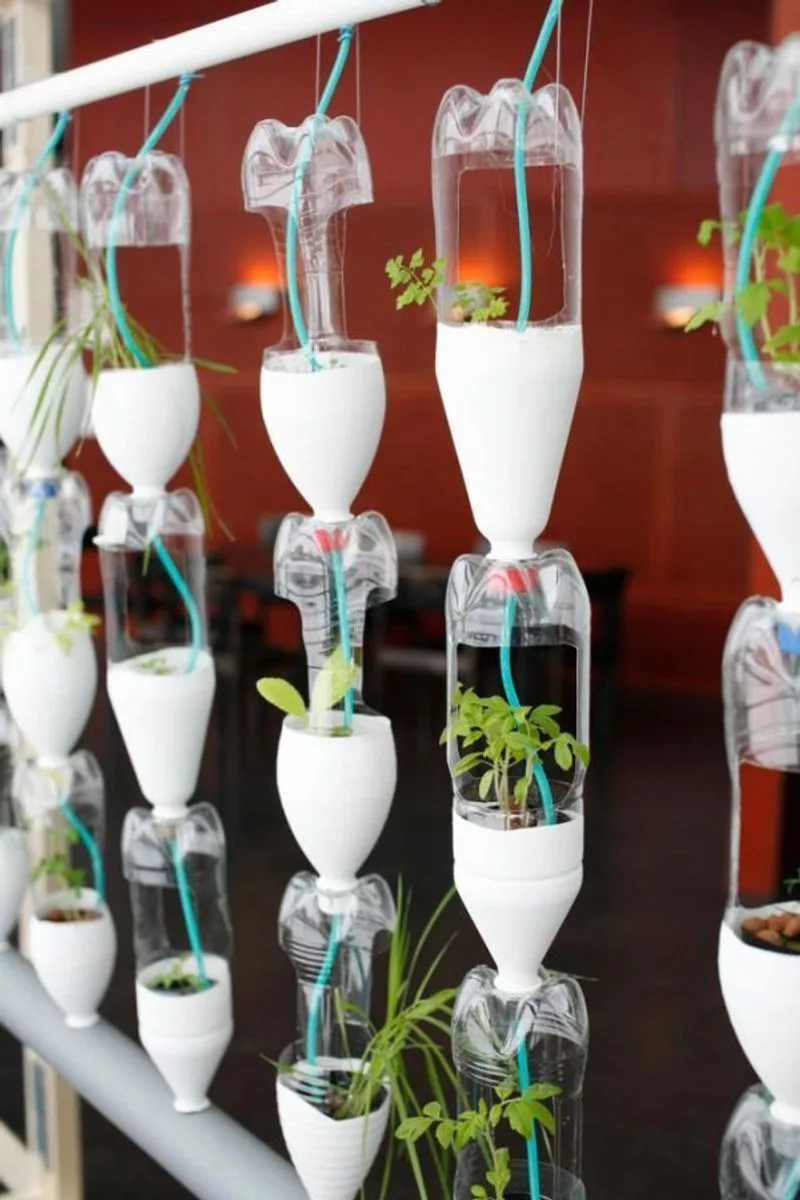
Upcycle plastic bottles by cutting them in half and using them as herb planters. Hang them from strings in a sunny spot, creating a vertical garden. This method is space-efficient and sustainable, offering an inventive way to grow herbs indoors.
Light Bulbs
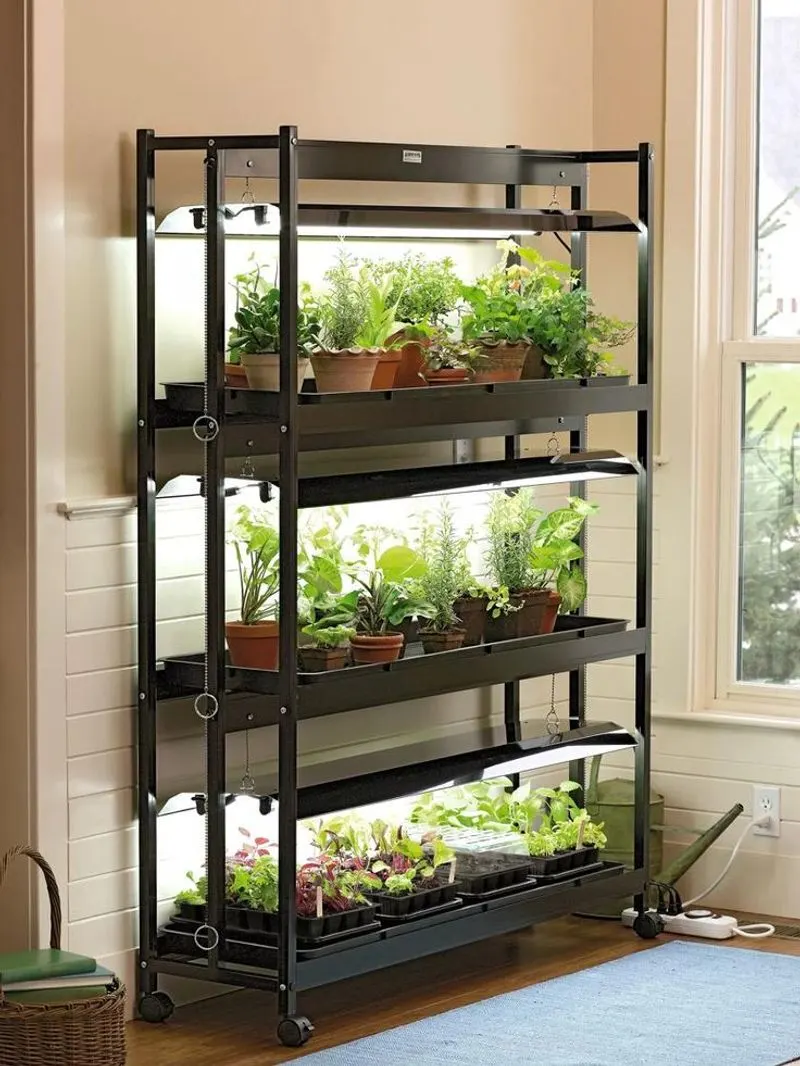
Old light bulbs can be turned into tiny planters that float in mid-air. Carefully hollow them out and add small amounts of soil and herb cuttings. Hang them with string for a contemporary, minimalistic look that brings greenery to eye level.
Wooden Crates
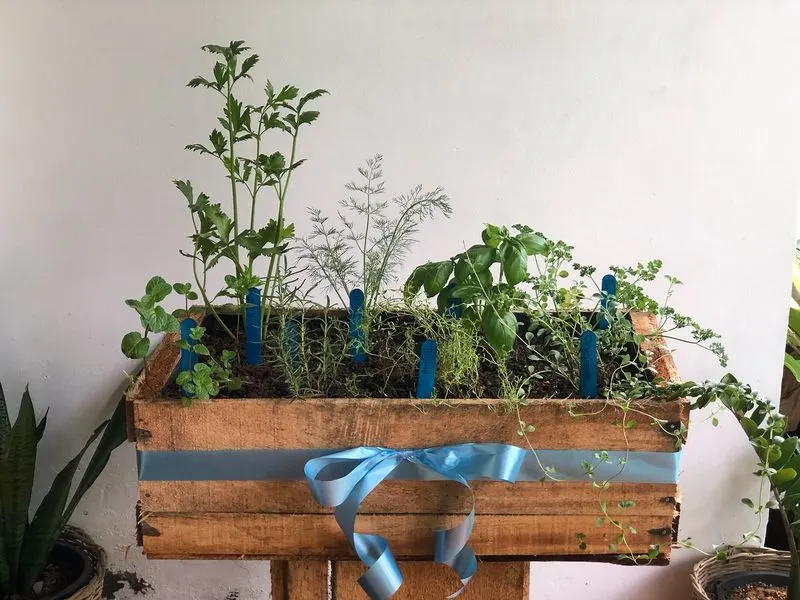
Wooden crates bring a rustic charm to your indoor herb garden. Line them with burlap or plastic, fill with soil, and plant your herbs. Stackable and spacious, they are perfect for creating a small vertical herb garden in any room.
Paper Bags
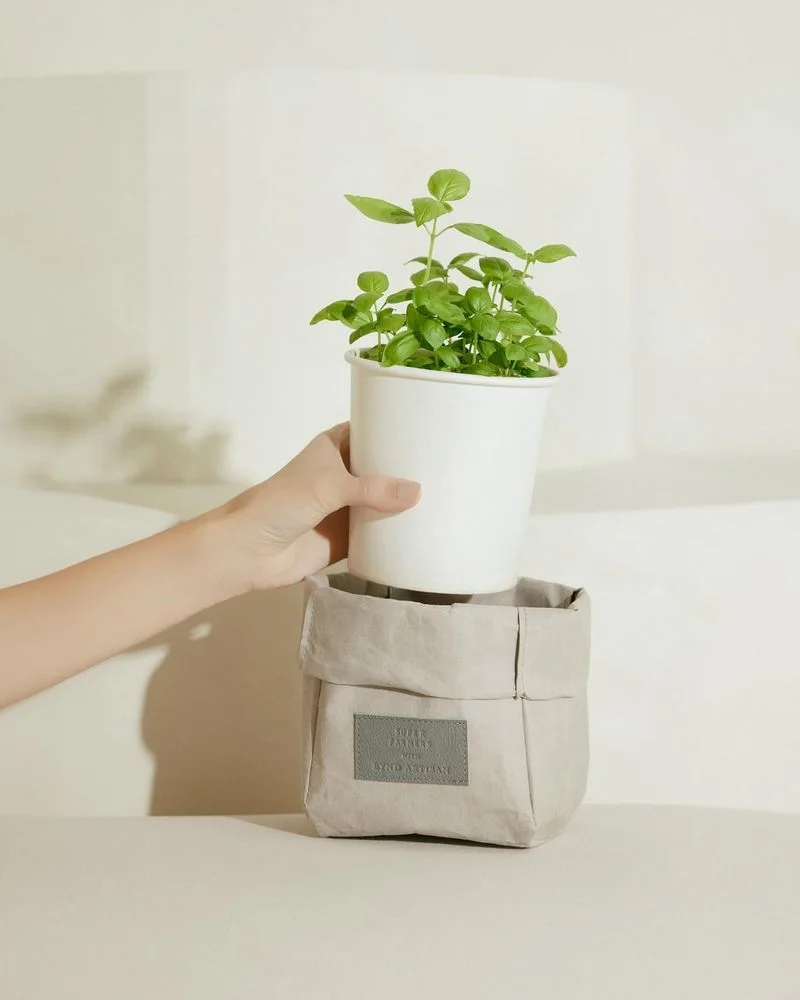
Paper bags lined with plastic can serve as temporary homes for herbs. Their casual look suits a laid-back decor style. These bags are perfect for starting seeds or housing smaller herbs, and they can be easily replaced or composted when worn out.

